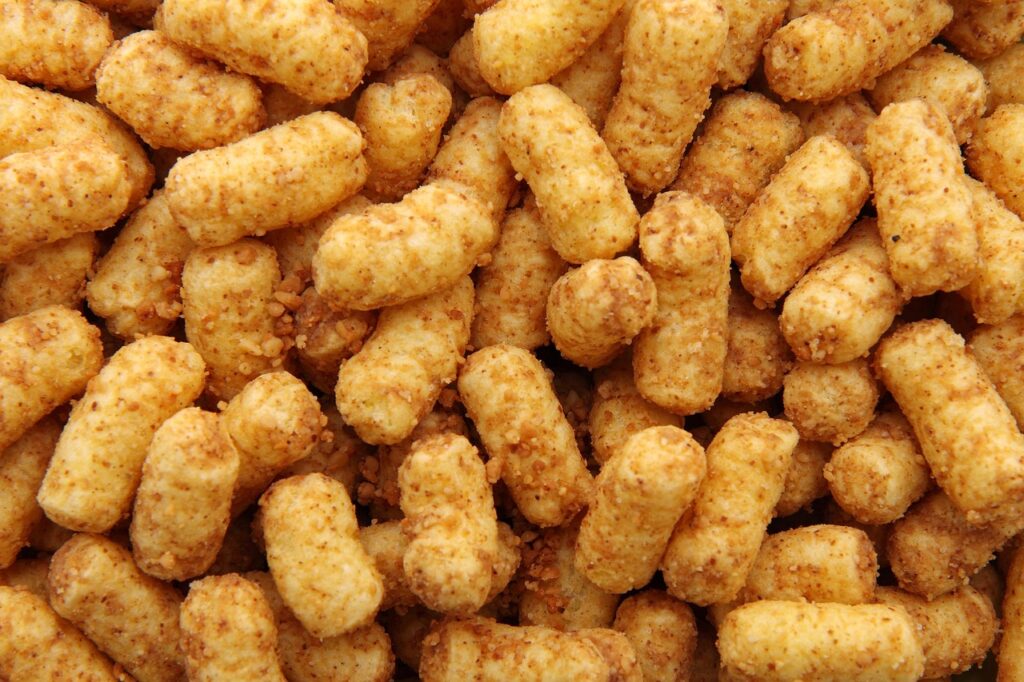
Overview
Managing diabetes can feel daunting, but with the right approach to your diet, it becomes much easier. Eating well with diabetes means focusing on balanced nutrition, making thoughtful food choices, and monitoring portion sizes. This guide will provide you with practical tips and strategies to maintain a healthy and enjoyable diet while effectively managing your blood sugar levels.
Understanding Diabetes and Its Dietary Implications
Diabetes affects your body’s ability to process glucose, the sugar that comes from the food you eat. In people without diabetes, insulin helps move glucose from the blood into the cells, where it’s used for energy. However, if you have diabetes, your body either doesn’t produce enough insulin or can’t use it effectively, leading to high blood sugar levels
Diet plays a crucial role in managing diabetes. The right food choices can help regulate your blood sugar, control weight, and reduce the risk of complications such as heart disease, nerve damage, and kidney problems. The goal is to maintain a balanced diet that helps keep your blood sugar in a healthy range
Related : How to Manage Diabetes Through Diet
Focus on Balanced Meals
The cornerstone of a diabetes-friendly diet is balance. You need to include a mix of carbohydrates, proteins, and fats in every meal to help stabilize your blood sugar. Each nutrient plays a different role in your body:
- Carbohydrates: These have the most significant impact on blood sugar, so it’s important to choose complex carbs that digest slowly, such as whole grains, vegetables, and legumes. Avoid refined carbs and sugary foods, which cause blood sugar spikes.
- Proteins: Protein helps your body repair and build tissue. It also helps you feel fuller for longer, which can aid in weight management. Good sources include lean meats, poultry, fish, eggs, beans, and plant-based alternatives like tofu.
- Fats: Healthy fats, such as those found in nuts, seeds, avocados, and olive oil, can help improve heart health and should be included in your diet. However, avoid trans fats and limit saturated fats, as they can increase your risk of heart disease.
A good way to plan your meals is to follow the plate method: Fill half your plate with non-starchy vegetables (like spinach, broccoli, or bell peppers), one-quarter with lean protein, and one-quarter with whole grains or starchy vegetables
Choose Low Glycemic Index (GI) Foods
The Glycemic Index (GI) is a measurement of how quickly a food causes blood sugar levels to rise. Foods with a high GI cause rapid increases in blood sugar, while those with a low GI have a slower, more gradual effect.
- To maintain stable blood sugar levels, aim to include more low-GI foods in your diet, such as:
- Non-starchy vegetables (spinach, carrots, cucumbers)
- Whole grains (barley, quinoa, oats)
- Legumes (beans, lentils, chickpeas)
- Certain fruits (berries, apples, pears)
High-GI foods like white bread, sugary drinks, and processed snacks should be consumed sparingly
Related : Manage Prediabetes: Foods to Avoid & Tips for Control
Practice Portion Control
Even healthy foods can cause problems if eaten in excess. Managing portion sizes is critical for controlling blood sugar levels and avoiding spikes. Here are some tips for portion control:
- Use smaller plates: This trick helps limit how much food you put on your plate.
- Weigh and measure your food: Especially when it comes to carbohydrates, it’s important to know how much you’re eating to accurately manage your blood sugar.
- Practice mindful eating: Pay attention to your hunger cues. Eating slowly allows your brain to register when you’re full, reducing the risk of overeating.
By controlling your portions, you can still enjoy a wide variety of foods without negatively affecting your blood sugar levels.
Plan Your Meals and Snacks

Planning your meals and snacks in advance is a powerful tool for managing diabetes. It allows you to make healthier choices and helps you avoid the temptation of quick, high-carb snacks that can spike your blood sugar.
- Schedule regular meals: Eating at consistent times each day can help keep your blood sugar stable.
- Prepare healthy snacks: Keep nuts, seeds, or low-fat yogurt on hand to satisfy hunger between meals without causing a sugar spike.
- Plan for balanced snacks: Combine protein and carbohydrates, such as an apple with peanut butter or a handful of almonds with a few whole-grain crackers.
Meal planning doesn’t have to be complicated—simply focusing on balance and variety can make a big difference in your overall health
Stay Hydrated and Avoid Sugary Drinks

Staying hydrated is important for everyone, but it’s particularly crucial for people with diabetes. Dehydration can lead to higher blood sugar levels, as there’s less water in your bloodstream to dilute glucose.
- Water is the best option for staying hydrated. You can also enjoy unsweetened teas or flavored water, but be cautious of any hidden sugars or sweeteners.
- Avoid sugary drinks like sodas, energy drinks, and sweetened fruit juices, as they can cause your blood sugar to spike rapidly
Related : Chronic Pain with an Anti-Inflammatory Diet
Monitor Your Blood Sugar Levels Regularly
Regularly checking your blood sugar levels is essential for understanding how different foods affect your body. This helps you make more informed decisions about what to eat and when to eat it.
- Keep a food diary: Write down what you eat and when you check your blood sugar to identify patterns.
- Adjust your diet based on your blood sugar readings. If you notice spikes after certain meals, you may need to reduce portion sizes or choose different foods.
Consult with your healthcare provider or a nutritionist to determine how often you should check your blood sugar and to set target levels.
Incorporate Physical Activity into Your Routine
While this is primarily a guide on eating well with diabetes, it’s important to remember that diet and exercise go hand in hand. Physical activity helps lower blood sugar levels and increases insulin sensitivity, allowing your body to use glucose more effectively.
- Start small: If you’re not used to exercising, begin with simple activities like walking or cycling. Aim for at least 30 minutes of moderate exercise most days of the week.
- Include strength training: Building muscle through resistance exercises can help improve your metabolism and insulin sensitivity.
- Stay active throughout the day: Small changes, like taking the stairs instead of the elevator or going for short walks after meals, can make a significant difference
Seek Support and Stay Educated
Living with diabetes is a lifelong commitment to your health. It can feel overwhelming at times, but you don’t have to do it alone. Seeking support and staying informed can help you stay on track.
- Consult a dietitian: A certified diabetes educator or dietitian can provide personalized advice and meal plans tailored to your needs.
- Join a support group: Many communities and online platforms offer support groups where you can connect with others managing diabetes. Sharing experiences and tips can be motivating and helpful.
- Stay informed: Keep up with the latest research and dietary guidelines for managing diabetes. As science evolves, new strategies and food recommendations may emerge that could benefit you.
The Takeaway
Managing diabetes doesn’t mean giving up all the foods you love or sticking to a strict, unmanageable diet. By focusing on balanced meals, portion control, low-GI foods, and regular monitoring of your blood sugar, you can enjoy a varied, satisfying diet that keeps your diabetes under control.
Remember, your diet is a key part of your overall health, but it works best when combined with regular physical activity, proper hydration, and a positive mindset. With the right approach, you can live a healthy, fulfilling life while managing your diabetes effectively
Frequently Asked Questions
- What types of carbohydrates are best for managing diabetes?
The best carbohydrates for managing diabetes are complex carbs, such as whole grains, legumes, and non-starchy vegetables. These digest more slowly and have a lower impact on blood sugar compared to refined carbs and sugary foods.
- What is the Glycemic Index (GI) and why is it important for diabetes?
The Glycemic Index measures how quickly a food raises blood sugar levels. Low-GI foods, like whole grains and non-starchy vegetables, cause slower, more stable increases in blood sugar, which is beneficial for managing diabetes.
- How can I control portion sizes to avoid blood sugar spikes?
You can control portion sizes by using smaller plates, weighing or measuring your food, and practicing mindful eating. Pay attention to your hunger cues and avoid overeating, especially with carbohydrate-rich foods.
- Are there specific snacks that are good for people with diabetes?
Healthy snacks for diabetes include options like nuts, seeds, low-fat yogurt, and fresh fruits with a low GI, such as apples or berries. Pairing protein with carbohydrates can help keep blood sugar stable.
- What drinks should I avoid with diabetes?
It’s best to avoid sugary drinks like sodas, energy drinks, and sweetened fruit juices, as they can cause rapid blood sugar spikes. Water, unsweetened tea, or flavored water are better alternatives for staying hydrated.
- How often should I check my blood sugar levels to manage my diet?
The frequency of blood sugar monitoring depends on individual health needs. It’s essential to consult your healthcare provider to determine how often you should check your levels. Monitoring regularly can help you understand how different foods affect your blood sugar.












